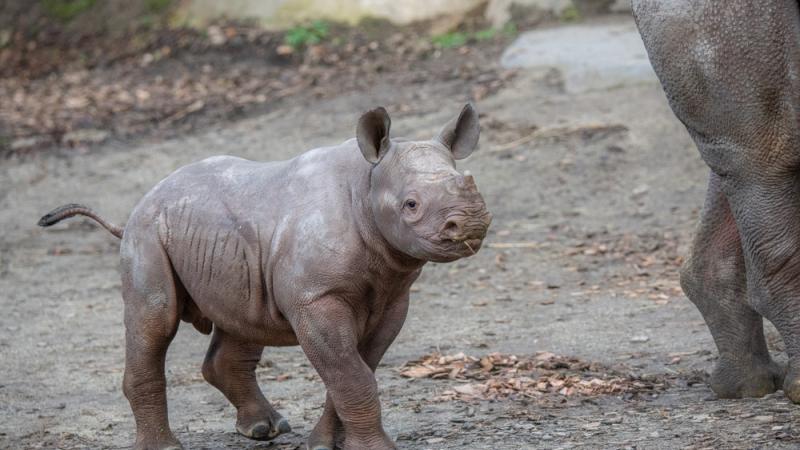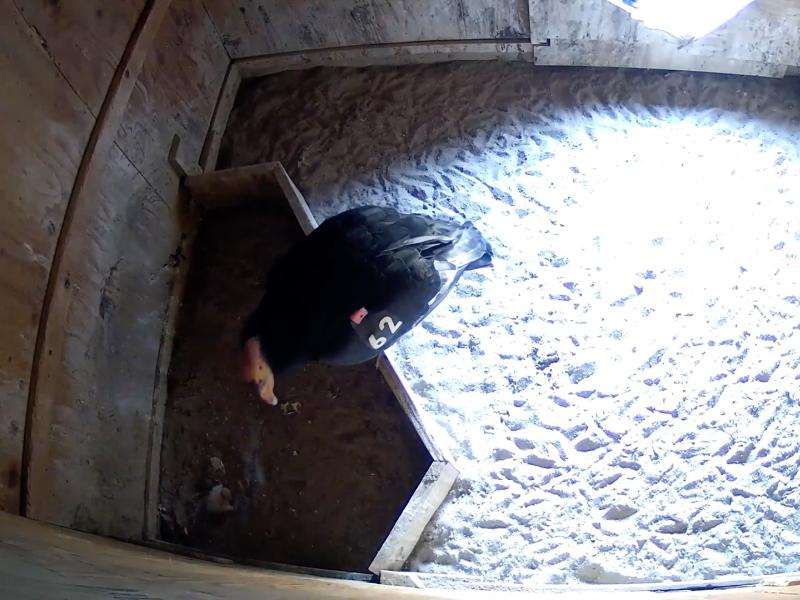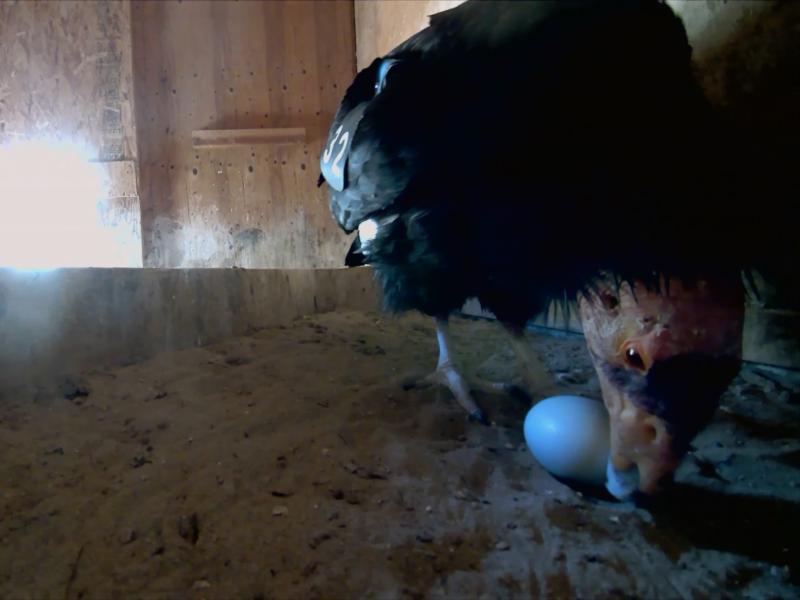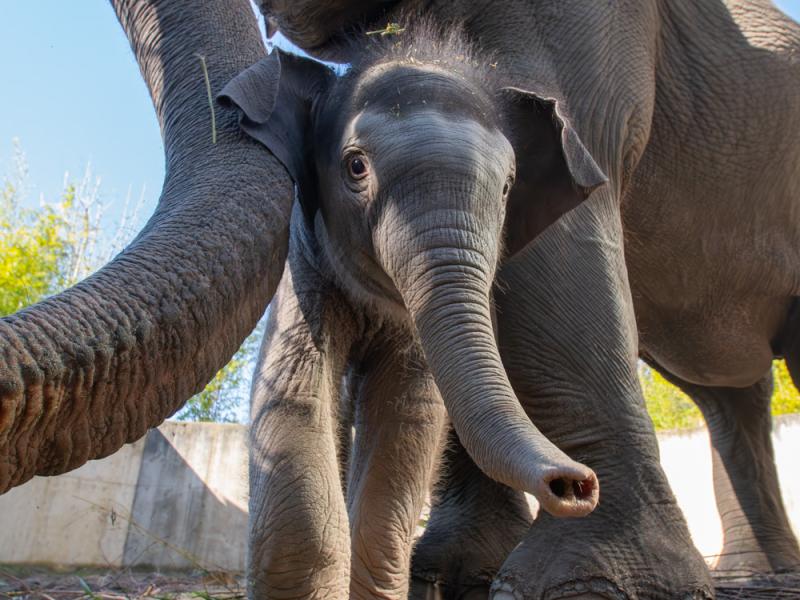A year of Tamu: Rhino calf celebrates his first birthday

At just over 1,000 pounds, young rhinoceros is one of the biggest 1-year-olds around
The smallest member of the Oregon Zoo rhino family reached a couple of big milestones this week: Tamu is a year old today and tipping the scales at a whopping 1,040 pounds. Born Dec. 4, 2023, the young rhino is growing in confidence and size, though he still keeps close to his mom, Jozi.
“He’s the only 1-year-old I know who weighs half a ton,” said Kelly Gomez, who oversees the zoo’s Africa area. “We’re thrilled with the way he’s growing and progressing.”
While it will take another year or two before this youngster’s in the same league as Jozi, his 2,400-pound mom, care staff expect big things from him.
“These rhinos represent a species that’s among the most imperiled on the planet,” Gomez said. “Hopefully, Tamu’s story can help inspire a new chapter in their conservation.”
Tamu and his parents, Jozi and King, belong to the eastern subspecies of black rhinoceros. In 2011, the western subspecies of black rhino was declared extinct. Poaching for rhino horn remains the greatest threat to all five rhino species, and the zoo continues to fund critical on-the-ground interventions needed to ensure their survival.
Since 2013, the zoo has partnered with the International Rhino Foundation to safeguard black rhinos through anti-poaching activities, intensive monitoring programs and work with local communities. Thanks to these and other efforts, the population of this critically endangered species is now on the rise.
Jozi moved to the Oregon Zoo in 2021 from to the Milwaukee County Zoo, joining King, who arrived from Chicago’s Brookfield Zoo earlier that same year. The moves were based on a recommendation from the Association of Zoos and Aquariums’ Species Survival Plan for rhinos. The AZA has established Species Survival Plans for many threatened or endangered species — cooperative programs that help create genetically diverse, self-sustaining populations to guarantee the long-term future of these animals.
“We’ve gone from half a million to a few thousand rhinos left in the blink of an eye,” noted U.K. naturalist Steve Backshall. “While those left in the wild are ludicrously precious, the rhinos that are in zoos (which were bred there, born there and cannot ever be released into the wild) are of disproportionate importance to their kind.”
More News

Double fluff: Zoo welcomes first condor chicks of season
The first two California condor chicks of 2025 hatched at the Oregon Zoo’s Jonsson Center for Wildlife Conservation.April 3, 2025

Thirteen eggs and counting at zoo's condor recovery center
At the Oregon Zoo’s Jonsson Center for Wildlife Conservation, endangered California condors have laid 13 eggs — with the potential for more on the way.March 11, 2025

Sunny with a chance of Tula: Baby elephant ventures out
Tula-Tu and her mom Rose-Tu ventured outside in the sunshine.February 28, 2025

